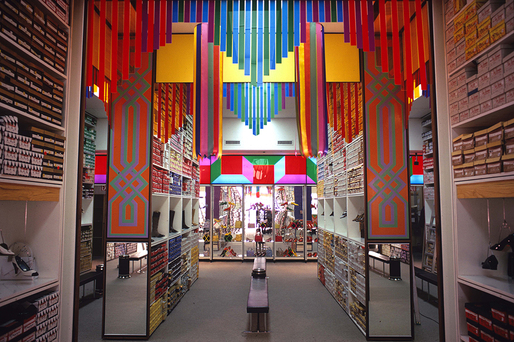
Environmental graphic design (EGD) is a design profession embracing many design disciplines including graphic design, architecture, industrial design and landscape architecture. Practitioners in this field are concerned with the visual aspects of way finding, communicating identity and brands, information design, and shaping a sense of place. Some examples of work produced by environmental graphic designers include the design and planning of sign programs, way finding consulting, exhibit and interpretive design, entertainment environments, retail design, information design including maps, as well as memorial and donor recognition programs. Environmental graphics have been divided into three main areas. These areas have been explained below.
1. Signage and Way finding
Signage and way finding programs communicate site and navigational information to a viewer. Signage helps to identify and brand a specific place, and when used as part of a larger way finding program helps people to determine orientation and navigate a complex environment with ease. Some of the signs that assist in way finding include road signs, Pictograms on packages, traffic signs etc.
2. Interpretation
Interpretive environments tell a story or communicate an idea or theme. Most often recognized as exhibit design, it also includes projects such as historical sites. They educate people on how the site impacted on the life and activities of some famous historic icons in the society.
3. Place making
Place making takes a more conceptual approach in that it involves designing a distinctive image for a site. It typically focuses less on communicating information. It focuses more on a site’s branding, architecture and interior design, among other things.
Environmental graphics are relevant in our lives. The listed points discuss their benefits.
1. They aid in the smooth human movement in the community- Signs and symbols found in our environment ensures free and smooth movement of members of the society such as road users, motorists and pedestrians. Without them would have resulted in chaos and disorder in our movement in the community.
2. They give warnings about dangers and hazards- Pictograms on packages of products warns us against hazardous chemicals that can be a threat to our health. The best ways of handling equipments and products are relayed to us by the help of these pictograms and signs.
3. They give directions as to handling situations and object – Road signs and markings, aid motor users to know how to handle hazards on the road. Package symbols give direction on how to handle and use products without any health implications.
